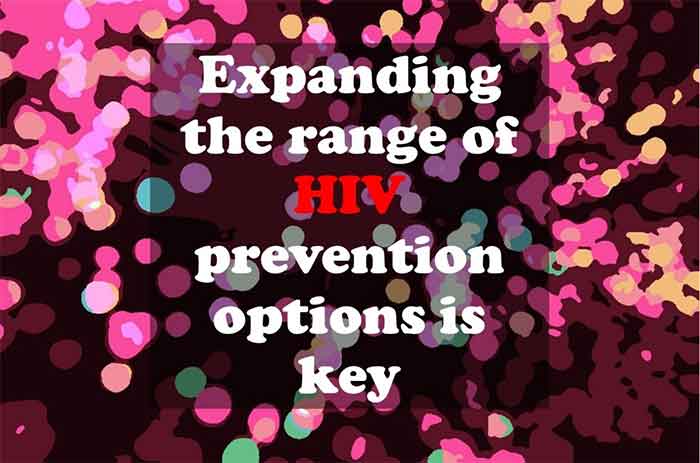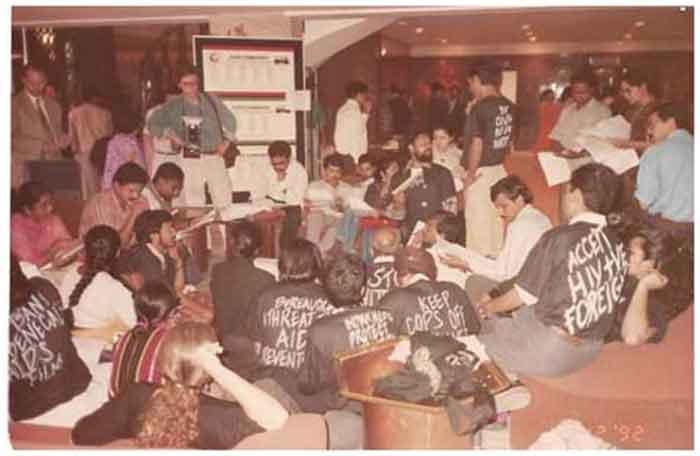
When we know how to prevent HIV transmission, and how to keep every person living with HIV healthy, then how can one fathom deaths of at least 680,000 people due to AIDS-related illnesses in 2020 worldwide? And how can one explain, at least 1.5 million new HIV infections occurring globally in 2020?
“Every new HIV infection is a reality check and grim reminder that we are failing on prevention – we could have done better. Every death due to AIDS-related illness, is not only unfortunate but a deeply disturbing setback, because we know how a person living with HIV can stay healthy, and live a fulfilling normal life. No one has to die of AIDS – only if we can convert scientific gains, words and promises into public health actions on the ground – fast enough and as best as we can” rightly said CNS founding Executive Director and feminist human rights advocate Shobha Shukla.
109 months left to end AIDS by 2030
All nations globally have promised to end AIDS by 2030 (109 months left to meet this target) as per the UN Sustainable Development Goals (SDGs) and domestic commitments. But we do not have to wait till 2030 because we can make #endAIDS a reality in lives of people living with HIV – TODAY.
Lifesaving antiretroviral therapy (ART) and viral load suppression, along with the whole cascade of HIV care and support, keeps them healthy and away from AIDS-related illnesses. Likewise, we can do so much better to break the chain of transmission of HIV. Treatment as prevention – works – along with whole cascade of HIV combination prevention options. Inaction is not a choice because price of inaction is unacceptable: new infections and untimely deaths to name a few.
“Thanks to scientific research and strong evidence that has given us tools to effectively prevent transmission of HIV, diagnose HIV, treat people living with HIV. That is why it is possible for people living with HIV who can live fulfilling normal lives and manage co-morbidities as well as co-infections. But we have not satisfactorily leveraged this knowledge into action. That is why in 2020, when the world was reeling through the Covid-19 pandemic, 1.5 million people were newly infected with HIV, and 680,000 people died of AIDS-related illnesses globally” added Dr Ishwar Gilada, who is on the Governing Council of International AIDS Society (IAS).
Since most nations could not meet 2020 AIDS targets, now the eyes are set on 2030 goalpost of 95-95-95 targets (95% of people living with HIV to know their status, 95% of them should be on ART, and 95% of these be virally suppressed).
“Grappling with Covid-19 pandemic for almost two years, the other crucial health issues like HIV, tuberculosis, other infectious diseases similarly other non-infectious health emergencies and exigencies got neglected in India and elsewhere. That resulted in non-achievement of WHO target 90-90-90 by 2020; which was set for 90% of people with HIV should know their status, 90% of HIV infected people who know their status should be put on antiretroviral therapy (ART) and 90% of those on ART should have their HIV-viral loads suppressed” said Dr Ishwar Gilada, who is also the President of AIDS Society of India (ASI), and among the first doctors to begin HIV medical management and care when first case got diagnosed in the country 35 years back.
Failure to end HIV-discrimination punctures the gains made in fighting AIDS
India has made a commendable progress since 7 April 2004 when it began the rollout of lifesaving antiretroviral therapy (ART) for people living with HIV, but formidable challenges remain. India along with other nations worldwide missed meeting the target of zero discrimination by 2020. Zero discrimination milestone now has been shifted to 2030, albeit with a caveat, “less than 10% discrimination by 2030”.
India has a golden opportunity to end HIV-related discrimination by fully implementing the HIV/AIDS (prevention and control) Act 2017. Groups such as the AIDS Society of India (ASI) worked hard to call for the law for ending all forms of HIV-related stigma and discrimination. Now ASI is calling for ensuring that all social security measures which are part of our legal framework must be guaranteed to every person living with HIV so that progress towards HIV care and support be fully galvanized, and also to prevent the Act being termed as a ‘toothless Act’.
Dr Ishwar Gilada said “Even four years after the HIV/AIDS Act 2017 is in place, there are no appointments of state Ombudsman; which is a mandatory provision in the Act. We yet to see a single prosecution under the provisions of this Act and it no way connotes those violations have not happened. In fact there is an urgent need to create awareness about existence of the Act and its provisions. People living with HIV are denied ‘mediclaim’ policies, as such policies still mention HIV in exclusion criteria. Life Insurances have still provision to not allow people living with HIV to take policies for insured sum more than INR 10 lacs (INR 1 million). Despite ASI approaching the Insurance Regulatory and Development Authority of India (IRDAI) and it agreeing to the issues raised by ASI, there is no headway.”
Another example of inaction comes from laws for the welfare of communities who are among those most-at-risk of HIV. Despite the Transgender Persons (Protection of Rights) Act 2019, the transgender community continues to face denial and rejection in areas such as employment, health, and public services.
“Without bold action against inequalities, India as well as other countries in the world risks missing the targets to end AIDS by 2030, as well as a prolonged Covid-19 pandemic and a spiraling social and economic crisis if we do not share the fruits of research and developments by way of supplying Covid-19 vaccines to Low and Middle-income countries” emphasized Dr Ishwar Gilada.
Forty years since the first AIDS cases were reported in the world, and 35 years since first case was reported in India, HIV still threatens us. Today, the world is off track from delivering on the shared commitment to end AIDS by 2030 not because of a lack of knowledge or tools to beat AIDS, but because of structural inequalities that obstruct proven solutions to HIV prevention and treatment.
Economic, social, cultural and legal inequalities must be ended as a matter of urgency if we are to end AIDS by 2030. But ending inequalities requires transformative change. Political, economic and social policies need to protect the rights of everyone and pay attention to the needs of disadvantaged and marginalized communities.
Dr Ishwar Gilada stressed that “We know how to beat AIDS, we know what the inequalities obstructing progress are and we know how to tackle them. The policies to address inequalities can be implemented, but they require leaders to be bold and not cold!”
Bobby Ramakant – CNS (Citizen News Service)
(Bobby Ramakant is a World Health Organization (WHO) Director General’s WNTD Awardee 2008 and edits CNS (Citizen News Service). Follow him on Twitter @BobbyRamakant or read www.bit.ly/BobbyRamakant)
– shared under Creative Commons (CC)













































